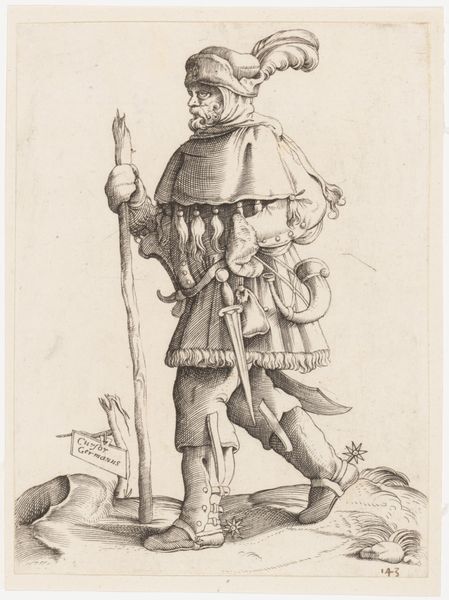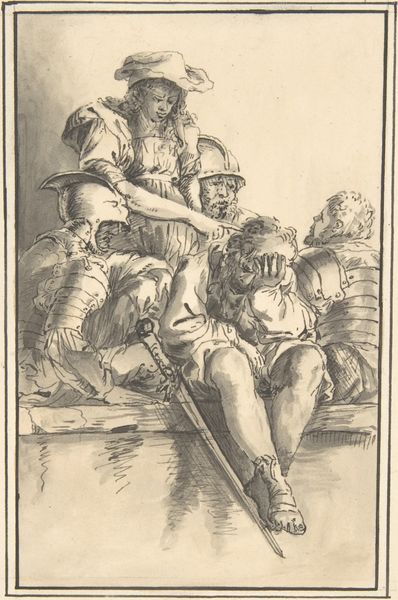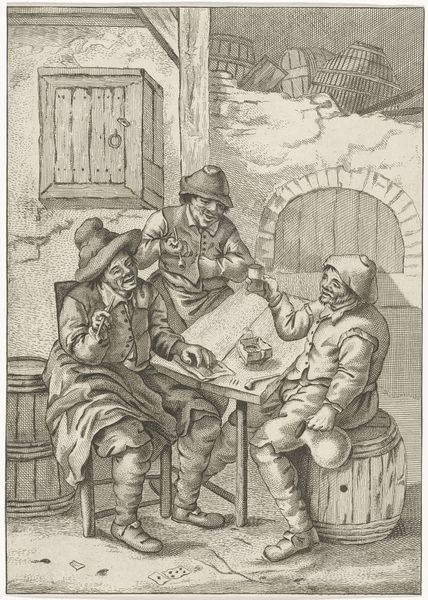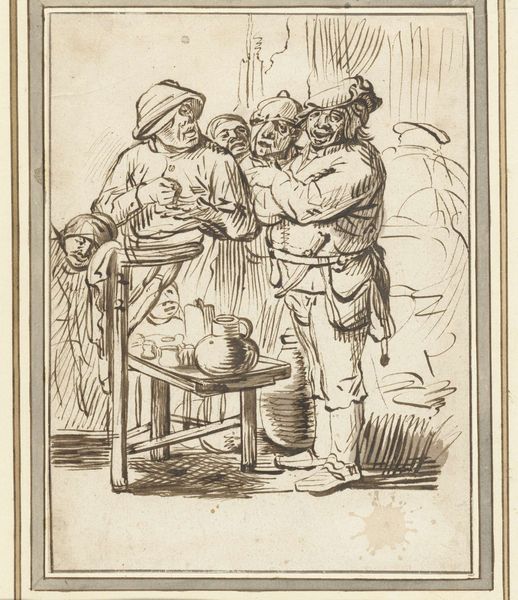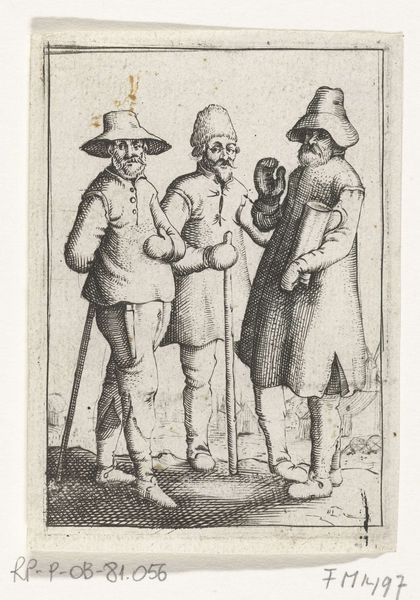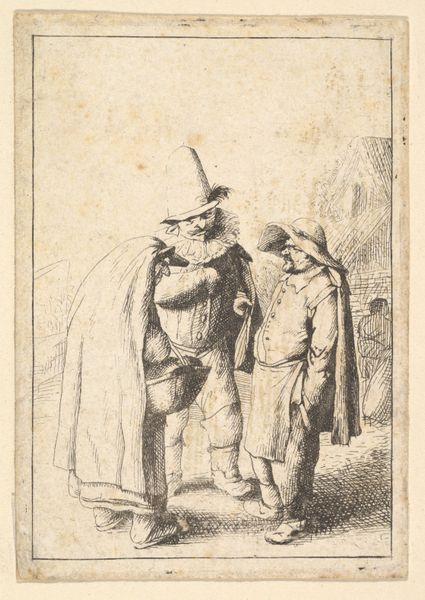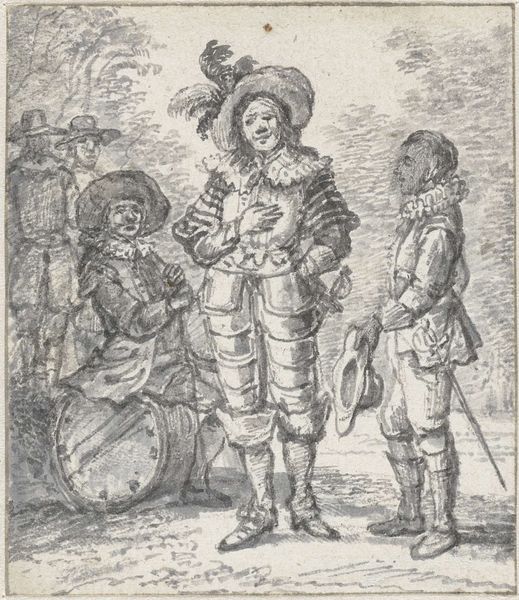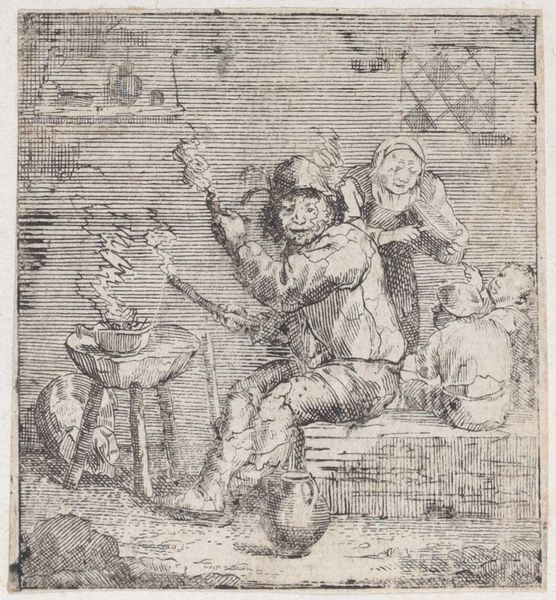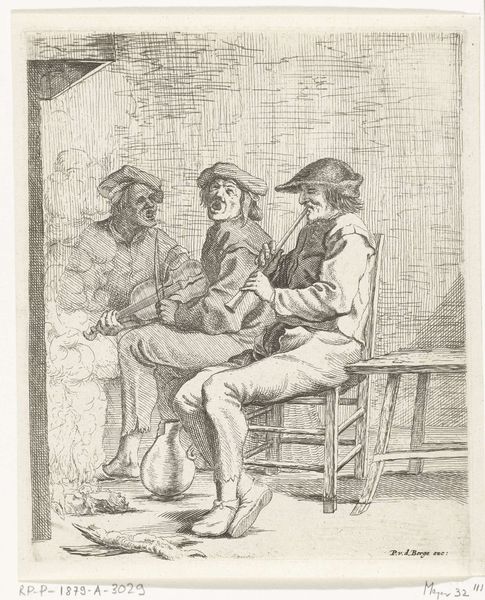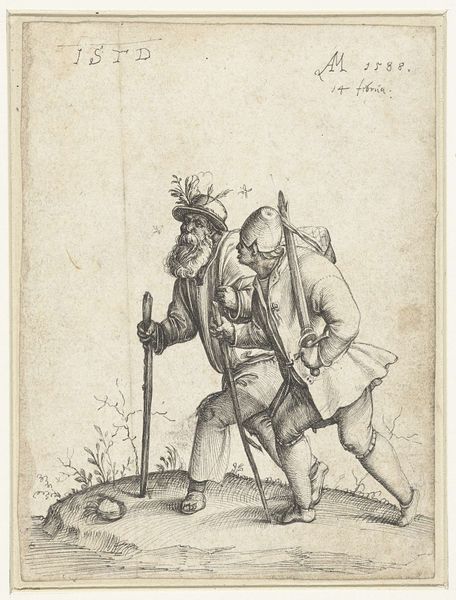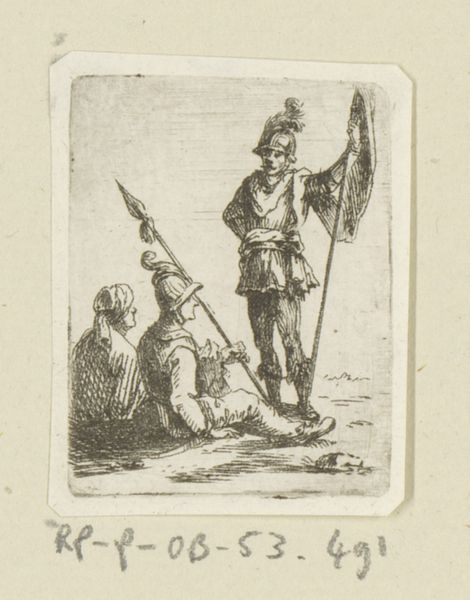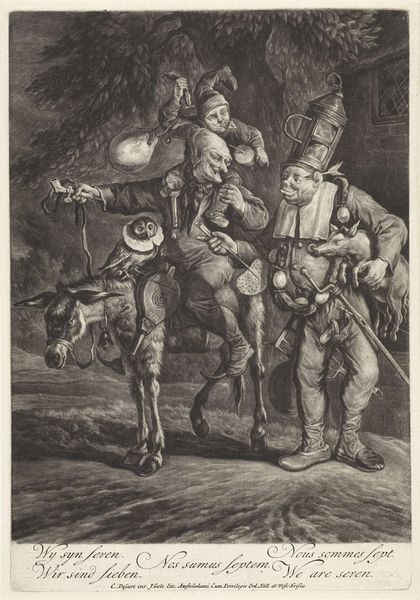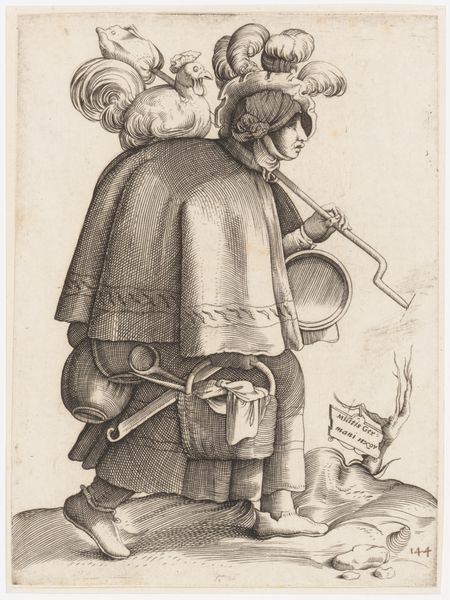
print, etching
#
narrative-art
#
baroque
# print
#
etching
#
figuration
#
genre-painting
Dimensions: height 206 mm, width 149 mm
Copyright: Rijks Museum: Open Domain
Editor: Here we have an etching titled "Smaak," which translates to "Taste," dating back to the 17th century. It depicts a group of men smoking. It’s pretty simple in its composition, all focused on this everyday act of tobacco consumption, and you really see the texture that the print-making process brings. How would you interpret this work? Curator: This piece invites us to consider the socio-economic factors at play during its creation. Think about the raw materials needed: the paper itself, the inks used in the etching process. And then there’s the tobacco. The introduction of tobacco to Europe was part of larger colonial exchange, linked directly to labor extraction and global trade. Editor: So, you're saying it’s not just a scene of casual smoking, but actually about these much larger systems of production and distribution? Curator: Precisely! Consider who could afford tobacco and pipes, what their availability might mean for the wider populace, what rituals became possible in connection to their production, transport and distribution. Look at how the tools and materials used – the etching process itself – make art accessible and reproducible. That has social implications. Does that reading change the way you look at the print now? Editor: It really does! I was initially drawn to the seemingly mundane portrayal, but knowing more about the labor connected with the trade enriches my understanding of the scene and its period. Curator: I'm glad! These objects around tobacco changed our perception on daily life and it’s fascinating to analyze how.
Comments
No comments
Be the first to comment and join the conversation on the ultimate creative platform.
